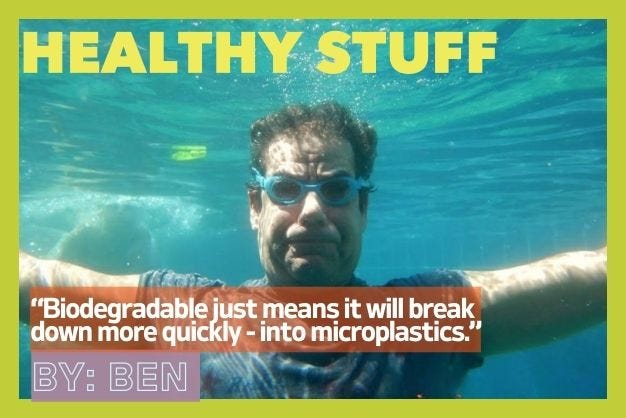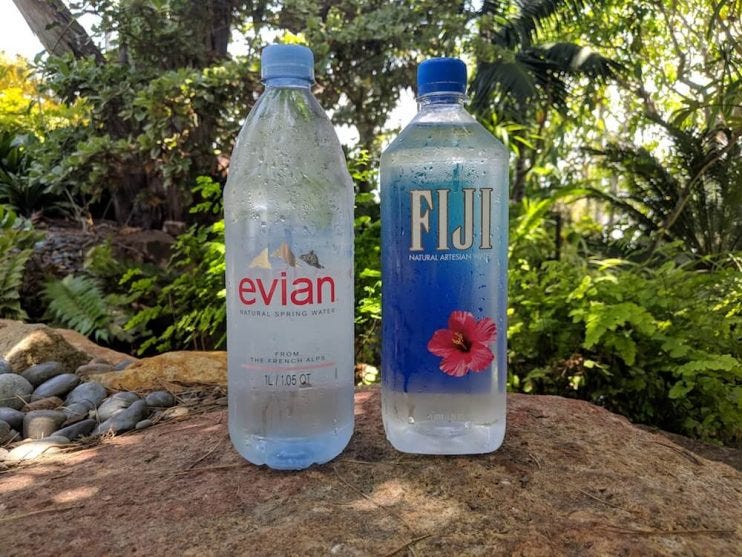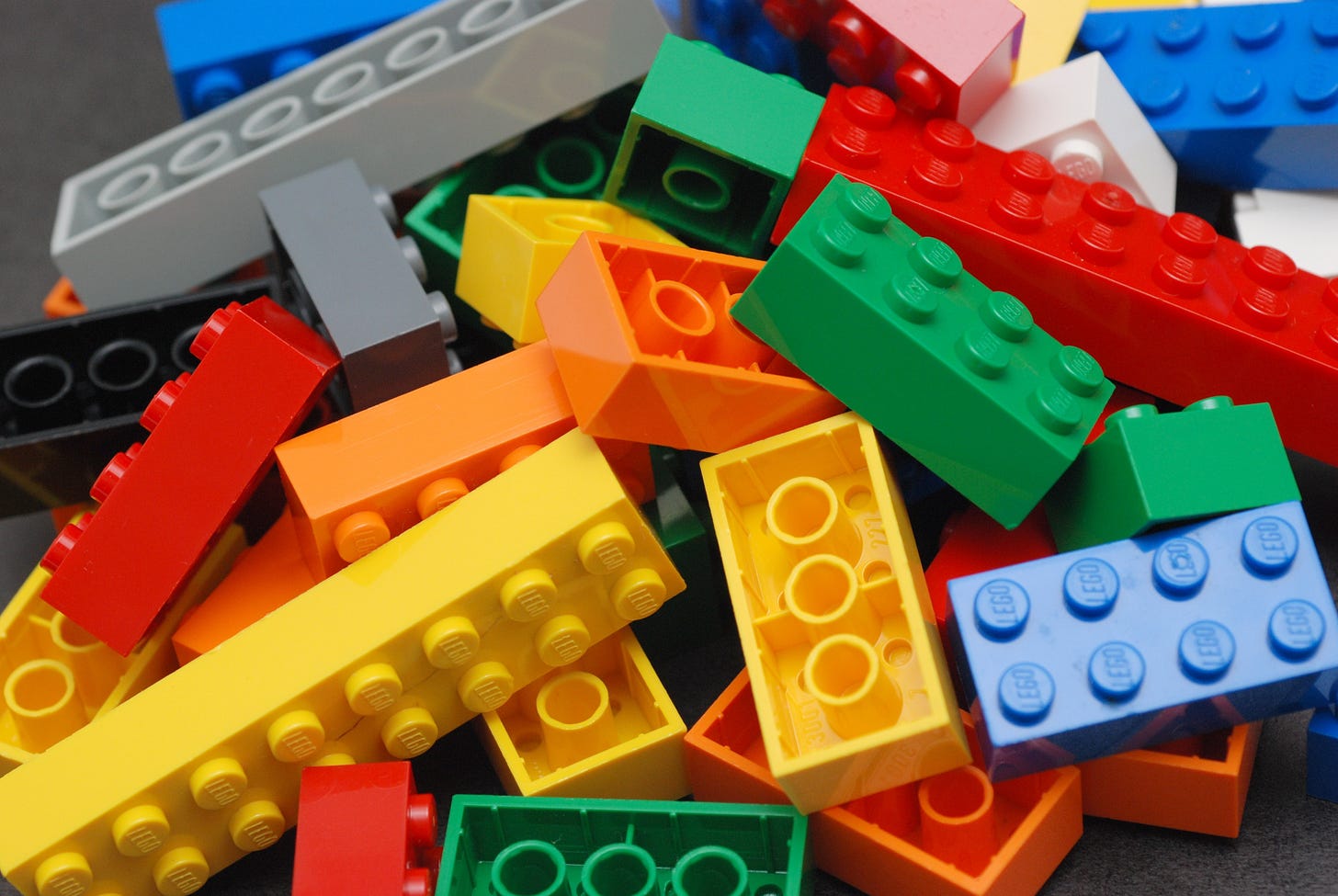I'm Jane's Brother and I'm Here To Help: 5 Plastic Products You Are OK To Buy
A product designer's opinion on which plastics to purchase. Plus: what "100% recycled" and "biodegradable" actually mean.
By Ben Pratt
As you may have heard, plastic recycling is a big fraud created by the plastic industry to make the use of plastic more acceptable to the public. Many were surprised when Greenpeace stated this in 2023. Only 9% of the plastic you put in the recycling bin is recycled, and even then, some of the things made from recycled plastic are problematic. So what should you think about using and buying things made from plastic?
First of all, do your best not to buy single-use plastic: packaging, bottles for drinks, and the like. It doesn’t make sense to buy bottled water. To make it even worse, many people buy water that isn’t locally sourced, but shipped by diesel-burning tankers, trains, and trucks, all the way from France or Fiji.
Water shipped from far away is no more pure than filtered water from your tap.
What is the solution? Drink water from the tap and filter it if you want. If you want to bring it with you, use a bottle that you will reuse many times. I carry reused bottles that were meant to be single-use and fill them up dozens, if not hundreds, of times. If I lose or break one, it's no big deal--unlike losing or breaking one of those 30-dollar thermos things that are fashionable today. It is always better for the environment to reuse something rather than buy something new. A fundamental truth is that you aren’t ever going to help the environment by buying anything, no matter how “green” the item purports to be.
Should you bother recycling plastic? In my opinion, it’s worthwhile–but barely. Even though over 90 percent of it goes to landfills, modern landfills are well-designed and constructed to prevent environmental contamination. Contrary to what we were made to believe years ago, there is no shortage of landfill space. If a landfill becomes full, the land is considered safe to build on, or use for other purposes. Yes, without sunlight or oxygen, the plastic will never break down–but that is a good thing (as I‘ll explain in a minute).
I was not aware of how little plastic is recycled until a few years ago, and that has affected my behavior. Now I don’t bother washing containers and just put them in the garbage. I figure the energy used to heat the water, and the wasted soap, makes it not worth it–especially when, in all likelihood, it will end up in a landfill anyway. Also, I never use wishful thinking and put plastic things in the recycling bin that I am not supposed to. They are removed in the sorting process, using more energy on the way to the landfill. Pretty much the only items that get recycled are bottles that held water, soda, and other drinks. Almost everything else is just a burden to the recycling facility.
Also, and you may know this already, but please don't fall for Greenwashing, marketing strategies to make you feel good about your purchases. When Patagonia advertises a fleece pullover as being made out of 100 percent recycled plastic, that’s greenwashing, not telling you that the fabric sheds off microplastics when washed. Other products made from recycled plastic–from toothbrushes to athletic shoes– also take at least as much energy (and release as much CO2)–to sort the plastic, transport it, and process it–as it does to manufacture using virgin plastic. Another example is plastic bags labeled “biodegradable”. Yes, they break down in a shorter time than nonbiodegradable bags, but they break down into microplastics. (I'm not going to delve into the danger of microplastics specifically here, because they've been so widely written about recently.)
So should plastic be avoided altogether? Not in my opinion. In many cases, plastic is the best material for the product. Plastic makes cars lighter, reducing our need for petroleum. Recycled plastic railroad ties perform far better than wood ones by lasting longer and not leaching preservative chemicals, like creosote, into the environment. A lot more energy goes into producing an aluminum laptop than a plastic one, and neither can go into your recycling bin.
Contrary to what many people think, planned obsolesce was never about making things break. (Think about it, if something breaks easily, you won't buy another one from that company again.) It was–and still is–about things going out of style. So if you buy something made of plastic, make sure not only that it is well-made and designed, but also that it won't quickly look dated. Here are some examples of plastic products you can buy without guilt.
Legos: Plastic isn’t bad if you never throw it away.
Legos have been around, unchanged, for 70 years, and will probably be around for decades to come. They are a great example of a product





